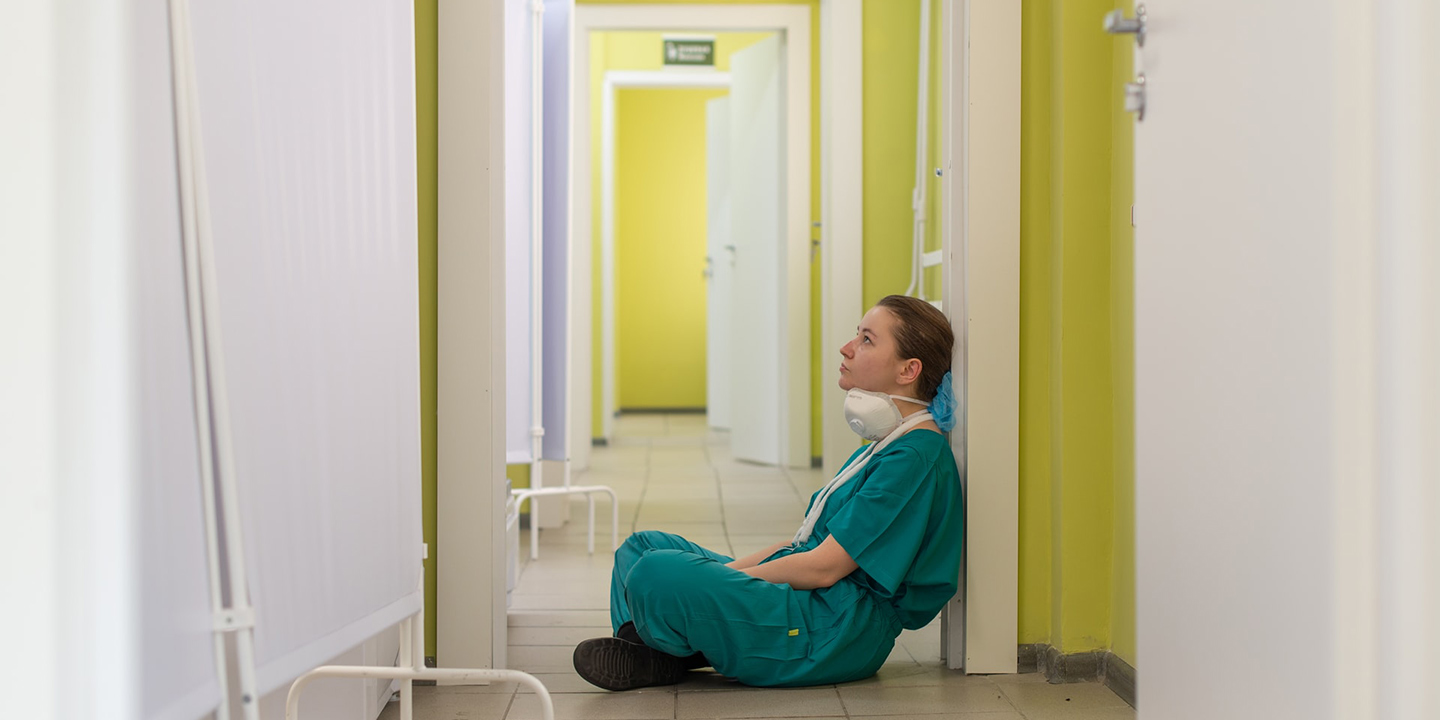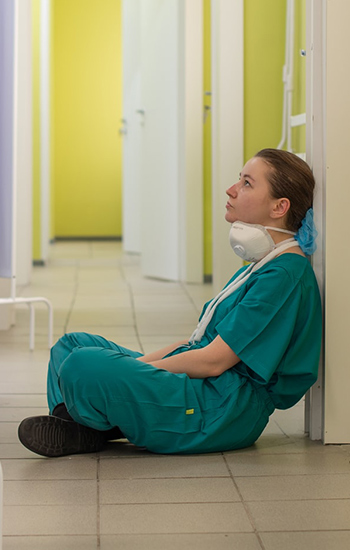HEALTHCARE
Nursing is a profession worthy of more than bare-minimum working conditions
Nurses have played a heroic role through the pandemic – tending the sick, supporting recovery and comforting the families of patients. But the experience has exacted a terrible emotional toll. A short film, Sounds of Caring: New York, selected as a Venice Film Awards Finalist (September 2020), documents harrowing testimony from nurses working in a COVID unit in New York. They speak of being fearful, anxious, heartbroken, overwhelmed by sadness, scarred and hurting. In Canada as in the US, hundreds of nurses have quit the profession [1] as the pandemic rolls on.
Even before COVID, nursing was an extremely intense profession. A Statistics Canada study found that almost one in three nurses experiences physical assault in the course of their work and almost half are subjected to verbal abuse. Around one-quarter experience chronic back pain while the rate of depression among nurses is twice the rate among the general population.
All this is contributing to a crisis in nursing recruitment. Tens of thousands of nursing jobs remain unfilled across the country as hospitals scramble to find workers amid a pandemic [2]. Meanwhile, the job site, Indeed, reports a steep fall in interest in nursing postings – nursing vacancies get only 35% of the clicks compared to the average job posted on the site [3]. Nurses are retiring earlier than ever before due to burn-out. This impacts patient care because older, more experienced nurses play a critical role in mentoring younger nurses, which contributes to better patient care overall.
Is the healthcare workspace part of the problem?
In many instances, the physical space in which nurses work contributes to the stress they experience. Modern hospital design, for example, can be characterized by a shift from ward, semi-private and private rooms to mostly private rooms, which are larger to accommodate families and equipment and for enhanced infection prevention and control and enhanced patient privacy – good for patients, but unintended implications often impact nurses. Larger rooms, and more private rooms, results in much longer corridors, adding kilometres to the distances nurses must walk every day. We may not be able to reduce the resulting corridor lengths, but we can reduce walking distances by locating nursing stations equidistant from room pods and we can explore optimal locations for medication rooms, in an effort to reduce walking distances.
If we value nurses as much as hospital vision and value statements imply, why do we continue to find staff wellness facilities housed in hospital basements with little consideration for safety, daylight and connection to nature? Similarly, why do we continue to locate ‘staff entrances’ in poorly lit, unsafe back doors, adjacent to dumpsters leading past loading docks and hazardous waste bins? For nurses on the nightshift, these facilities simply aren’t safe or accessible places to rejuvenate on breaks or post a traumatic event.
Rethinking the design of hospitals by putting ourselves in the shoes of nurses may reveal design solutions that can serve to ‘heal the healers’. By focusing on nurses and their physical and emotional context in the workplace, we may be able to reduce the risks they face, enhance their work life experience, reduce the rate of burn-out, enhance retention, lower recruitment costs and stop the tsunami of nursing talent leaving the workforce in record numbers.
Rethinking nurses’ working environment
Here are some suggestions for how we can design hospitals that acknowledge both the physical and emotional realities of nursing:
Let there be light!
The ability of natural light to lift our spirits and connect us to the natural environment is well-known [4]. For this reason, nursing care centres need to be designed around a principle that allows for some degree of natural light.
Create off-stage spaces
Healing gardens for patients and visitors are a valuable offering for those recovering from illness and for family members trying to cope. So, we should create dedicated spaces on or near each nursing unit where nurses can momentarily escape the emotionally charged clinical environment. The walking meditation labyrinth at Bridgepoint Health in Toronto and at the front entrance to the California Pacific Medical Centre in San Francisco are great examples of the type of off-stage spaces that should be considered as ways to help heal the healers.
The importance of first impressions
The benefits of creating welcoming spaces for patients and visitors are already recognised. Beautiful atriums and entrance lobbies serve to reduce patient anxiety, create distraction, and inspire healing and hope. Currently, however, nurses are more likely to enter their workplace via a poorly lit, narrow, unsafe back door staff entrance. The principle of creating a welcoming first impression should apply to nursing staff, too.
The healing influence of art
Enlightened organizations recognise the potential of art to inspire joy, promote positive emotions and break down barriers between institutions and the communities they serve. As a result, art is often displayed to great effect in the lobbies and corridors of healthcare settings [5]. SickKids in Toronto is a brilliant example. Why can’t this practise be extended to nursing units? If art for hospital visitors represents value for money, art that evokes a sense of well-being or nurture for nurses surely represents value, too.
Do no harm
Air quality standards typically measure exposure to hazardous substances during an eight-hour work shift. This covers the potential negative effects of exposure to new carpets, fabrics, paints, tiles, glues and other industrial building materials. But nurses often work 12-hour shifts, potentially increasing their exposure by 50%. Specifying building materials that exceed standard exposure and off-gassing limits must be considered.
Making the case
Investment in design is insignificant relative to the lifetime costs of operating a hospital. However, the potential benefits of nursing-focused design for staff and their patients are immense. Better working environments that demonstrate the value an organization places on its nurses could help address challenges around recruitment, retention and job satisfaction. Nurse-focused design can help attract new nurses to the profession, nurture them when they are at work and help keep them committed to their heroic role.
Find out more about our healthcare expertise.
Footnotes:
Read Next
Article
Article
Nursing focused design: How do we heal the healers?
By: Ian Sinclair
We’d love to get to know you
Get in touch
"*" indicates required fields
Get in touch
Share





